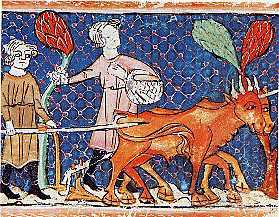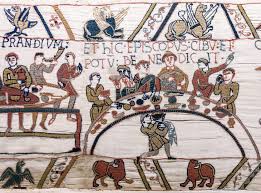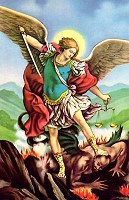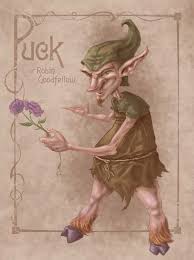I love Autumn or Fall. Growing up on a small farm in the Midwest, I always had plenty to do come September and early October, when the crops came in from the field and the garden. Our corn bin and silo filled up. Our kitchen still overflowed with late fruits and vegetables, canning jars and freezer containers. At least one hog and calf were culled to butcher. We kids picked up walnuts and pecans to be cracked and picked out during the long winter nights. (Ostensibly, we would. Dad usually did that while he watched his TV shows before an early bedtime). Our high school class made money for our senior trip by picking up corn left in the field after harvesting. And the rural communities had Fall Festivals and other celebrations.
 Never once did I think about the history and traditions surrounding the end of growing season and those lovely celebrations featuring apple butter and jams and corn mazes and community cook-outs. When I was young, this time of year was fun…but it led up to the really fun time at the end of October—Halloween.
Never once did I think about the history and traditions surrounding the end of growing season and those lovely celebrations featuring apple butter and jams and corn mazes and community cook-outs. When I was young, this time of year was fun…but it led up to the really fun time at the end of October—Halloween.
Not until later history classes in school did I learn about the autumn traditions that flourished in earlier periods. The Middle Ages, for instance.
The end of the growing season and harvest was celebrated around the autumnal equinox. It was one of four ‘quarter days’ in Medieval England when debts were due, land purchased, servants hired—a settling up day.
It also marked the beginning of Michaelmas Term at Oxford and Cambridge. The Courts had a Michaelmas term, as well.
The medieval autumn celebrations combined many pre-Christian traditions marking the end of growing season and the preparation for the lean and often treacherous days of winter. It was a long time before the next crops would be mature enough to eat, and people didn’t have the luxury of canning their surplus. So whatever could not be cured or dried or kept deep in the cool ground couldn’t be retained for use over the next five months. Even many domesticated animals would be headed for slaughter later in the season for the simple fact that there would be nothing for them to eat. Only a handful of necessary animals were kept as a beginning herd for next year.
This seasonal celebrations of plenty saw community gatherings with food, drink, bonfires, and other various interesting activities of the season. (Scotland saw horseraces.)
 With the coming of Christianity, this autumnal equinox observation was tied to a Christian Feast Day—that of St. Michael. Thus Michaelmas (the Mass of St. Michael).
With the coming of Christianity, this autumnal equinox observation was tied to a Christian Feast Day—that of St. Michael. Thus Michaelmas (the Mass of St. Michael).
St. Michael, of course, is the primary warrior angel who is said to have driven Satan from heaven. He protects against the dark. And since autumn ushers in the season of shorter, colder days and longer, darker nights leading to winter, such an association is understandable. Bad things are more likely to happen in the dark, so people needed a strong defender against that darkness and evil.
Unfortunately, myths say, when Satan fell from heaven, he landed in a bramble or blackberry bush. He cursed it, spit on it, stomped on it, and…um…did something else to it that would make the berries inedible. So blackberries are not to be picked after Michaelmas Day.
In some traditions, a goose was eaten on that feast day (if one were wealthy enough to have geese—otherwise, chicken would serve.) In places, the day is known as Goose Day. Nottingham, England, celebrated a goose fair on Oct. 3. It still does.
In fact, the Nottingham Goose Fair is going on right now. It runs from Oct. 3-Oct. 7 this year. According to the Visit Nottinghamshire website, the “Goose Fair is one of Europe’s largest traveling fairs with a history that dates back more than 700 years.”
These days, Michaelmas is celebrated on Sept. 29. But before the change in calendars from Julian to Gregorian in the late 1500s, it was held around Oct. 10 or 11.
So as I look back on those days spent scalding tomatoes in huge pans on the stove and hand-sieving them for thick, smooth juice,(Mom was very particular—no food processors for her) or salting down pork in the smokehouse at my great-grandparents farm, I realize I had it good. And history shows just how good that was.
I thought I was working hard. But I was making wonderful memories.
Sources:
https://www.visit-nottinghamshire.co.uk/whats-on/goose-fair-2018-p358771
https://www.historic-uk.com/CultureUK/Michaelmas/
http://projectbritain.com/calendar/September/Michaelmas.html

